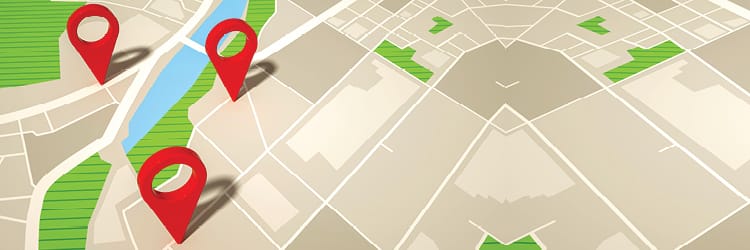“Great things in business are never done by one person; they’re done by a team of people.”
A professional kitchen and bath sales designer who wants to start his or her own business will have the best success by opening what SEN Design Group calls a “studio” model. It’s engineered to leverage your strengths — design creativity, consulting skills, selling experience, and project management know-how. As the owner, you will handle every single sale personally from beginning to end — until you get too busy.
Building a support team
When the leads are flowing in consistently, instead of adding another professional sales designer, add a design assistant so you can continue to “front” every single lead. Once the retainer is secured, hand it off to your design assistant to develop the plans, estimate, and recommended material selections.
As your business continues to grow with leads, avoid the mistake of trying to do everything yourself, and hire a project manager. Since a project manager is focused on coordinating all the details that go into a smooth kitchen or bath installation, your firm can deliver superior customer service to your clientele.
With this two-person team in play supporting you, you’ll push beyond the $1–$1.2 million revenue marker, without the mistakes even great sales designers/owners typically make when doing such high volume business. Having the right team assembled before you’re at the limit of your earning potential will allow you more time to stay out in front, working every lead until your firm is retained.
When the leads start piling up again, hire a second design assistant instead of adding a professional sales designer. Then match the personalities of your clients with those of your two design assistants for the best fit. When projects take so long to design, order, and install, the chemistry between your clients and team members is critically important.
The support team-building is strategically wise before adding your first sales designer for a number of reasons.
- When each of your team members is a specialist — your firm can consistently deliver superior customer service, enabling your fledgling company to build an outstanding reputation. This concept is known as “soft technologies.”
- Your team will be experienced enough to provide the same kind of support for your first sales designer when he/she is finally hired — assuring continuation of superior client service.
- It’s the fastest way for you to earn a 6-figure income while socking away net profits for an Emergency Reserves Fund (12 months of fixed expenses in a liquid investment portfolio) to backstop your business.
- It gives you the opportunity to take some courses to gain critically important sales management skills.
- It also gives you time to write an operations manual for training that first sales designer, and future staff, in a way that seamlessly integrates with your company’s established processes and culture.
As you develop from an owner who is the company “rainmaker” to a general/sales manager, your operation will emerge into what SEN calls the “showroom” business model.
The studio business model footprint
Today, traditional showrooms and the studio model share the kitchen and bath market pretty evenly. While showrooms typically do higher volume business when the economy is good, the studio model offers greater flexibility. A studio owner can quickly pull back when the economy goes south, lessening the brunt of a recession, and have an easier time expanding their business when the market comes roaring back.
Studios operate in a variety of sizes from an ample 1,800 square feet of space to a compact 800, depending upon the market size and desired market penetration. The ideal space for most owners runs from between 800 to 1,200 square feet, which allows for smaller office areas to be kept onsite, and display areas large enough to maximize a higher volume of business.
However, there are some limitations to the studio business model that will play out during the life of your business. One is the difficulty of owners to take extended vacations without having a significant drop-off in sales. Another is the inability to command a premium price for your business — with a complete cash-out up front — when it’s time to exit.
That’s because the ideal buyer for realizing those objectives is the white collar executive with an MBA, corporate marketing/managing experience, motivation, and the resources to buy and run their own business. However, they probably will have neither an interest in personally selling kitchens and baths nor a talent for it like the typical studio owner/designer. Their interest will be in leveraging the core business and their skill set to build out a large network of satellite locations. They will need an experienced sales team to come along with the acquisition.
Shifting to the showroom business model
So, 5 to 8 years prior to retirement, it would be smart for the “studio” business owner to shift to the “showroom” business model. Elevate those design assistants who have been incubating in your operation to full-fledged professional sales designers, handling all the leads from the onset.
Elevate yourself simultaneously to a General Manager role to guide and direct these fledgling sales designers. Add design assistants to support them. Your objective is to have a strong, experienced sales team in place all following the same disciplined sales process that delivers the same consistently superior customer experience that you did with your previous, smaller support team. In the short term, you might not make as much personal annual income, but you will more than make up for it when you cash out.
If you have a proven, replicable sales process in play — such as DesignAlign’s GBB selling system — and an excellent staff of sales designers, design assistants, a bookkeeper, and a project manager (managing a trusted team of subcontractors) working under you, when all the gears are oiled for a smoothly run operation, you’ve got the makings for a major business expansion.
From a successful showroom model footprint, an owner can take the next logical step, which is really a great leap into the next sales stratosphere.
Launching profitable satellite studios
Drawing from the “studio” model, satellite locations should look, feel, and operate in a similar fashion. At minimum, they should be staffed with 2 sales designers, originally trained in the flagship showroom, plus a design assistant and a project manager.
The “soft technologies” concept must be followed by the firm to control the myriad of details that go into successfully completed projects. This will ensure that the same superior level of customer service remains consistent in tangential markets.
The satellite operation offers an intriguing way to sell kitchens and baths — and make a lot of money — if it’s done properly. Two crucial points factor into successfully running an enterprise with one or more satellite locations.
First, run this business using a client-satisfying, replicable sales process. It’s absolutely essential to having a successful satellite showroom.
When you bring a successful selling system that’s proven over time to work into the satellite studio model, and those who come on board thoroughly know how to sell using it, you can leverage the principle of “economies of scale.”
In this scenario, certain key functions like marketing, accounting, record-keeping, product purchasing, warehousing, and deliveries are all centralized in the flagship showroom location. The net result is that each lower overhead satellite location has the opportunity to turn a 15-20% net profit, double that of the original showroom model.
The second crucial point is this: use real time, lead analytical data from your CRM to help determine the optimum nearby markets to plant the satellite locations.
DesignAlign technology delivers both of these critical expansion needs: the replicable, client-satisfying sales process known as Good-Better-Best interactive project budgeting and a business analytics module.
With a winning sales system in play, and 800 to 1,200 square feet to work with, the owner can replicate the business volume of a highly successful studio model of $1,500,000 to $2,500,000, in each of its satellite locations.
Selling out at a premium price
Imagine having an easy time selling off your business at a premium price when you choose to retire! With the widening trend of corporate executives trading their positions for entrepreneurial endeavors, the showroom kitchen and bath business model that has added 1-3 satellite studios, is an attractive business to own as an alternative to buying a conventional franchise.
There is a strong appeal for owning a successful, independent business that has a proven sales formula. It will be especially attractive because that formula is embedded in a software platform, not in the owner’s head. Best of all, there won’t be any monthly ongoing franchise fees draining the company’s net profits.
A new owner could come from anywhere. They don’t have to know a lot about the kitchen and bath business to run a successful one! Someone making an offer on your firm would be buying the selling system and retaining the experienced team that have been successfully using it, to generate much higher-than-competition profits that made the business an enticing one to begin with.
In advance of planting your first satellite showroom, study DesignAlign analytics to guide your profit-generating power. Analytics show where, when, and how satellites can be developed for the most success. Before they are in play, the owner has to decide what market they’re going to serve. In this age of information technology, it’s too risky and costly for owners to solely rely upon their intuition to choose a good location.
Remember, the replicable, transparent selling system is the spine of the whole operation, and through it, each satellite showroom can be highly profitable. Satellite showrooms only work when the system that drives the flagship store is replicable.
The more satellites, the more of a premium price you can command for the sale of your life’s work product.
—SEN Design Group




